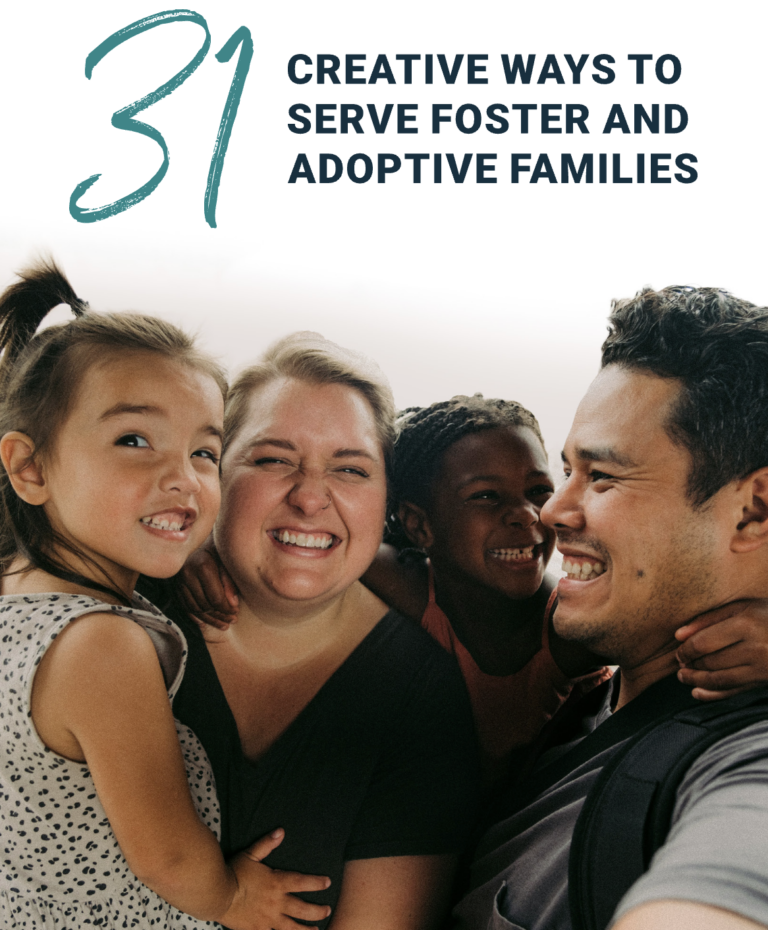
Understanding the Language of Foster Care: A Simple Guide to Common Acronyms
7 Pasos para Convertirse en Padre de Crianza
When you step into the world of child welfare, it can feel like learning a new language. Whether you’re a new volunteer, a church partner, a foster parent, or simply someone who wants to understand more, the chances are you’ve come across a sea of letters like DFPS, CPS, PMC, or TBRI® and wondered… what do these even mean?
At The Riverside Project, we believe understanding the system is one of the first steps to changing it. And while we know acronyms don’t tell the whole story, they can help us move through this work with more confidence and clarity. Below is a simple guide to some of the most common acronyms you’ll hear in the foster care space:
DFPS & CPS Divisions
- DFPS – Department of Family and Protective Services: The Texas agency responsible for protecting children, the elderly, and people with disabilities from abuse, neglect, and exploitation.
- CPS – Child Protective Services: A division of DFPS that investigates abuse and neglect reports and may remove children from unsafe homes.
- INV – Investigations: Handles the initial reports of abuse or neglect and determines whether intervention is necessary.
- FBSS – Family-Based Safety Services: Provides services to families to keep children safe at home and avoid removal when possible.
- CVS – Conservatorship: Manages cases where CPS has temporary or permanent custody of a child.
- SSCC – Single Source Continuum Contractor: A nonprofit or agency contracted by the state to oversee foster care services regionally under Community-Based Care.
- CBC – Community-Based Care: Texas’ approach to privatizing the management of foster care services regionally through SSCCs.
- PEI – Prevention and Early Intervention: A division of DFPS focused on preventing child abuse, neglect, and juvenile delinquency.
Court & Legal Terms
- CASA – Court Appointed Special Advocate: A trained volunteer appointed by a judge to represent the best interests of a child in foster care.
- GAL – Guardian ad Litem: A person (often the same as CASA) appointed to legally advocate for the child’s best interests in court.
- PMC – Permanent Managing Conservatorship: When the state or another caregiver is granted long-term custody of a child, often after parental rights are terminated.
- ICWA – Indian Child Welfare Act: Federal law that governs the removal and placement of Native American children in foster or adoptive homes.
- ICPC – Interstate Compact on the Placement of Children: A legal agreement that governs how children are placed across state lines.
Foster Care & Placement
- CPA – Child Placing Agency: An organization that licenses and monitors foster homes, and places children in those homes.
- CWOP – Children Without Placement: Children in DFPS custody who do not have a licensed placement and are staying in unlicensed settings like offices or hotels.
- IAP – Individualized Assessment and Placement: A tool used to match a child’s needs to the most appropriate type of foster or residential care.
- GRO – General Residential Operation: 24-hour residential childcare operation that provides around-the-clock care for children 17 years or younger whose parents or guardians are temporarily or permanently unable to care for them
- RTC – Residential Treatment Center: This is a type of GRO that is a 24-hour facility which provides intensive care and treatment services exclusively for children with emotional disorders.
- QRTP – Qualified Residential Treatment Program: A federally defined, trauma-informed residential program for children with complex needs.
Youth & Transition Programs
- PAL – Preparation for Adult Living: A program helping foster youth transition to adulthood by offering life skills training and support.
- ETV – Education and Training Voucher: Funding available to current and former foster youth to attend college or vocational training.
- SIL – Supervised Independent Living: A type of extended foster care placement that allows young adults (18–21) to live independently in a setting like an apartment or dorm while still receiving case management and support services.
- ECM – Enhanced Case Management: A higher level of case management support provided to children and youth in foster care who have complex needs, often involving more frequent contact, coordination of services, and individualized planning to promote stability and permanency.
Adoption & Permanency
- TARE – Texas Adoption Resource Exchange: A statewide website listing children in Texas who are legally free for adoption.
- TXPOP – Texas Permanency Outcomes Project: An initiative to improve permanency outcomes and family engagement in the child welfare system.
- MAPS – Model Approach to Partnerships in Parenting: The standardized training for foster and adoptive parents in Texas.
- SAFE – Structured Analysis Family Evaluation: A tool used in Texas to assess and license foster and adoptive families.
Therapeutic & Support Frameworks
- TBRI® – Trust-Based Relational Intervention: A trauma-informed therapeutic model designed to meet the needs of children who have experienced significant developmental trauma.
- CBT – Cognitive Behavioral Therapy: A widely used therapy method to address negative thinking and behavior patterns.
- TF-CBT – Trauma-Focused Cognitive Behavioral Therapy: An evidence-based model for treating children with trauma histories.
- EMDR – Eye Movement Desensitization and Reprocessing: A trauma-focused therapy that helps individuals process and heal from distressing memories by using guided eye movements or other forms of bilateral stimulation.
Other Helpful Acronyms
- CCL – Child Care Licensing: The division within DFPS that ensures licensed child care providers and facilities meet standards.
- AR – Alternative Response: A CPS approach that allows for a more collaborative, non-adversarial response to low-risk reports.
- LCPAA – Licensed Child Placing Agency Administrator: A licensed individual authorized to oversee the operation of a child-placing agency.
- IEP – Individualized Education Program: A customized learning plan developed for students who receive special education services.
- CAC – Child Advocacy Center: A safe, child-focused facility where a multidisciplinary team investigates abuse and supports children and families through the legal and healing process.
- HHS – Health and Human Services: A government department that oversees programs and services related to health, welfare, and human needs, including child welfare and Medicaid.
No matter where your unique place along the River may be, your efforts are part of a growing community working together to help children and families in Houston heal and thrive. And to serve well, we believe you deserve to feel informed and empowered, especially when it comes to navigating the complexities of the foster care system.
We hope that this guide helped demystify some of the acronyms commonly used in this space. But if you have any more questions that concern any aspect of foster care—big or small—we would love to start a conversation. That’s what we’re here for! Just send us a message at hello@riversideproject.org and we’ll help you find clarity or determine your next step.
In the meantime, if you are looking for tangible ways to support Houston’s foster care community, please check out our new guide: 31 Creative Ways to Serve Foster and Adoptive Families.
Our team, who walks alongside foster families every day, handcrafted this resource with one goal in mind: to help people like you find meaningful, practical ways to make a difference right where you live.
Don’t have time to try these ideas right now, but you still want to support our neighbors in need? Donate to help us transform the foster care system in Houston!



